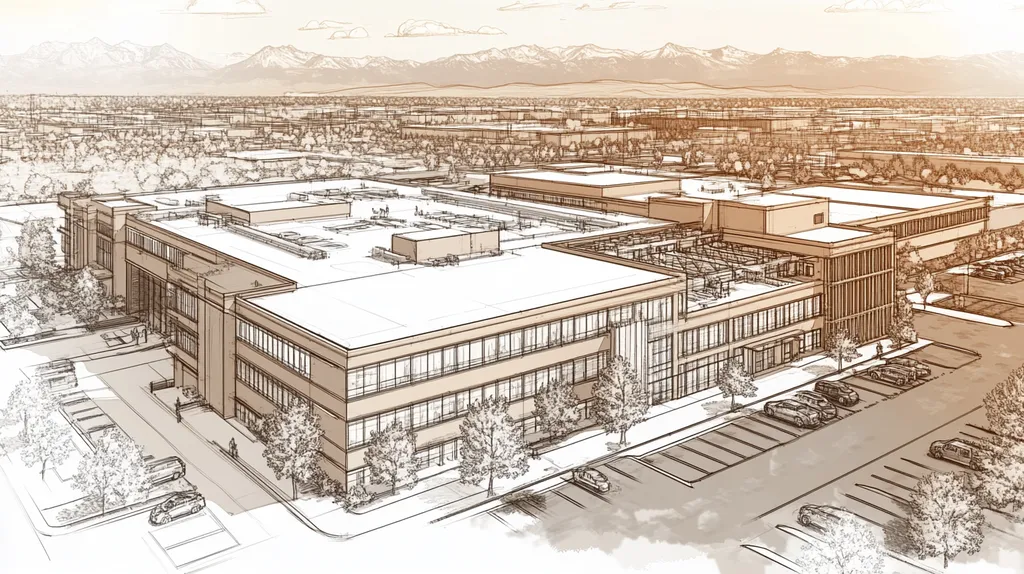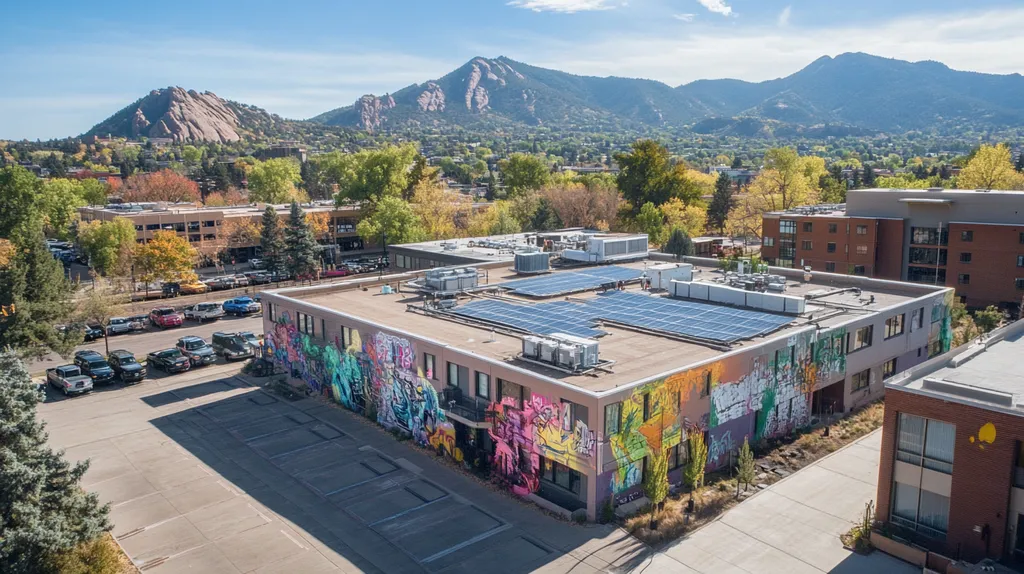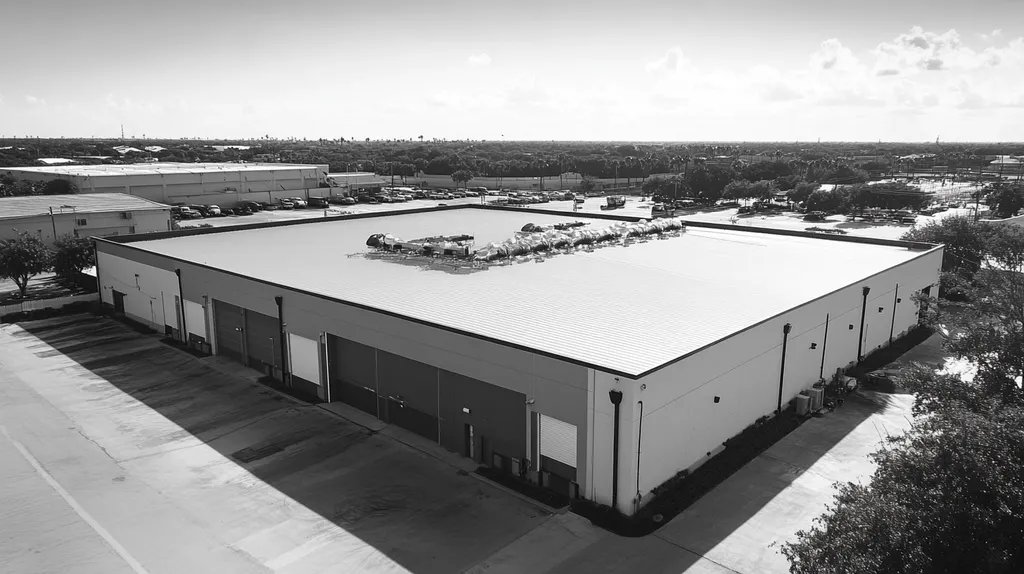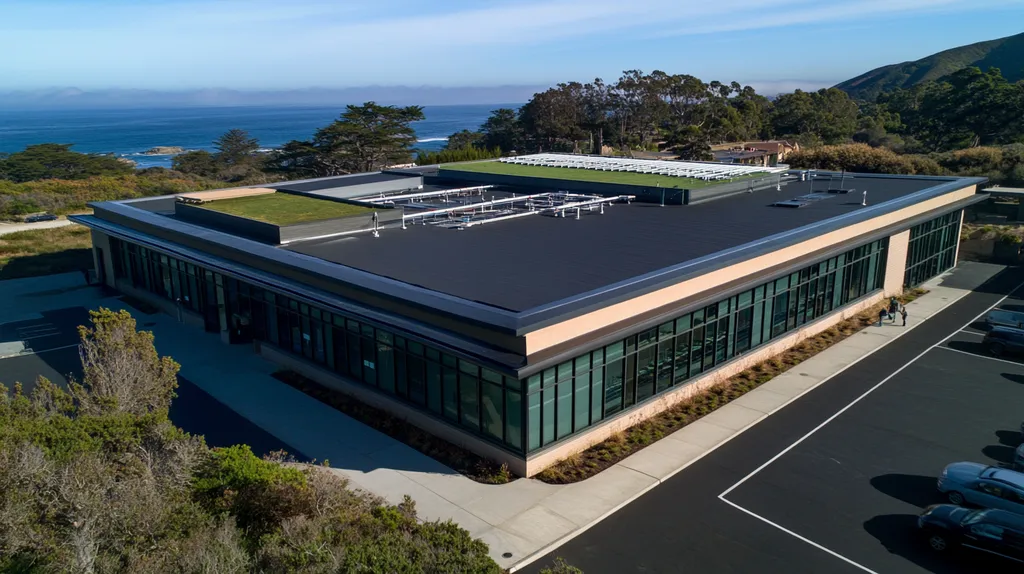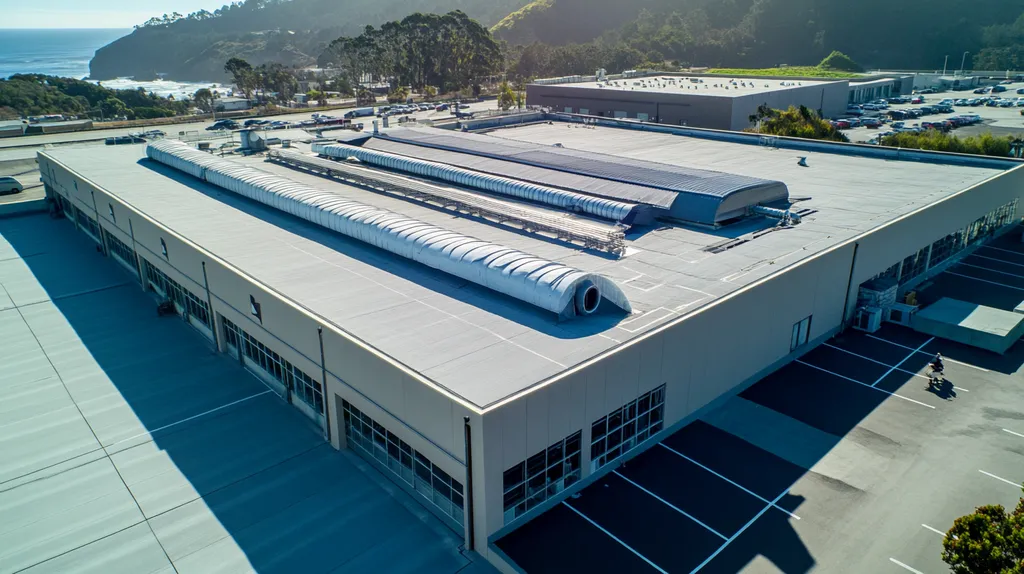Welcome to today’s Battle Royale featuring two roofing heavyweights: “Thermal Breaks” in the east corner versus “Air Barriers” in the west!
Tonight’s showdown pits these contenders against each other across six punishing rounds designed to test every aspect of their performance for Commercial Roof Weather Resilience.
At stake? Millions in potential costs, decades of building protection, and the critical performance demands of modern commercial and industrial facilities.
Our professional judging panel will evaluate each round on technical merit, real-world performance, and value delivery. After all six rounds, we’ll declare our ultimate champion.
Ladies and gentlemen, facility managers and building owners… it’s time to rumble!
ROUND 1: INITIAL COSTS & INSTALLATION
When severe weather strikes, a commercial roof’s ability to handle sudden temperature changes can mean the difference between business as usual and costly disasters. Studies show that thermal stress accounts for up to 30% of premature roof failures, making the choice between thermal breaks and air barriers crucial. Let’s examine how these two contenders stack up in terms of initial investment and installation requirements.
Material Expenses
Thermal breaks represent a premium solution, utilizing advanced materials like structural thermal blocks and specialized fastening systems. While these components typically cost 25-40% more than traditional materials, they create a complete thermal barrier that prevents heat transfer through the roof assembly.
Air barriers utilize more conventional materials like membranes and sealants, making them initially more budget-friendly. However, these materials may require more frequent replacement and offer less comprehensive protection against thermal bridging.
When considering material longevity and performance, thermal breaks provide superior value despite higher upfront costs. For this category, thermal breaks gain the ADVANTAGE.
Installation Complexity
Installing thermal breaks demands precise placement and careful attention to detail, requiring specialized training and experience. Each thermal break must be properly positioned and secured to maintain the integrity of the thermal envelope.
Air barriers feature a more straightforward installation process, using familiar techniques that most roofing crews already know. This simplicity can reduce labor costs and minimize the risk of installation errors.
However, simpler isn’t always better. The detailed installation process of thermal breaks ensures better long-term performance and fewer callbacks. In this category, air barriers claim the ADVANTAGE due to lower complexity and reduced labor requirements.
Project Timeline
Thermal break installation typically extends project timelines by 20-30% compared to conventional roofing methods. This longer duration requires careful planning to minimize disruption to building operations.
Air barrier installations can often be completed more quickly, allowing businesses to resume normal operations sooner. Their familiar installation process means fewer delays and more predictable completion dates.
Each solution offers distinct timeline advantages depending on project priorities. Quick completion with air barriers versus long-term performance with thermal breaks creates a TIE in this category.
ROUND 1 WINNER: THERMAL BREAKS
ROUND 2: DURABILITY & LIFESPAN
Weather extremes pose an increasingly critical threat to commercial roofing systems. With each passing season, roofs face more intense thermal cycling, UV exposure, and moisture challenges that can dramatically shorten their functional lifespan. Understanding how different roofing solutions handle these stresses is crucial for making informed investment decisions that protect both buildings and bottom lines.
Material Longevity
Extreme heat can cause roofing materials to expand and contract, potentially leading to cracks or warping that compromise the entire system. This thermal cycling puts immense stress on roofing components, making material selection crucial for long-term performance. (source: Bel Air Foam & Roofing)
Thermal breaks utilize dense, highly engineered materials specifically designed to maintain their properties through thousands of thermal cycles. These materials typically retain their effectiveness for 25-30 years when properly maintained.
Air barriers rely on more conventional materials that may require periodic replacement or reinforcement. While initially effective, their performance can degrade more quickly under severe weather conditions.
Given their superior resistance to thermal cycling and aging, thermal breaks earn an ADVANTAGE in this category.
Weather Resistance
Commercial roofs must withstand everything from scorching heat to freezing temperatures, often within the same 24-hour period. This constant exposure to elements tests the limits of roofing materials and their protective capabilities.
Thermal breaks create a robust barrier against temperature extremes, helping prevent condensation and ice formation. Their structural integrity remains largely unchanged even after years of weather exposure.
Air barriers provide excellent protection against wind and moisture infiltration but may struggle with extreme temperature variations. Their effectiveness can diminish over time, particularly in areas with dramatic climate shifts.
For their consistent performance across all weather conditions, thermal breaks claim another ADVANTAGE.
Maintenance Requirements
Regular maintenance plays a crucial role in extending roofing system lifespans. The frequency and complexity of required maintenance directly impact both operational costs and overall system reliability.
Thermal breaks typically require minimal maintenance beyond regular inspections. Their robust construction and simple design mean fewer potential failure points and reduced maintenance needs.
Air barriers need more frequent inspection and occasional repairs to maintain their effectiveness. Their multi-layer construction creates more opportunities for potential issues that require attention.
The lower maintenance burden of thermal breaks earns them a third consecutive ADVANTAGE in this category.
ROUND 2 WINNER: THERMAL BREAKS
ROUND 3: PERFORMANCE FACTORS
When severe weather strikes, commercial roofs face their ultimate test. Recent data shows that unexpected temperature swings of 40°F or more can reduce a roof’s structural integrity by up to 15% in a single event. For facility managers, understanding how roofing systems handle these dramatic shifts isn’t just about maintenance – it’s about protecting millions in assets and operations.
Temperature Management
Thermal breaks create distinct zones within the roofing system, effectively isolating temperature differences between interior and exterior environments. This separation prevents thermal shock waves from transferring through the structure, significantly reducing stress on roofing materials.
During extreme temperature swings, thermal breaks maintain their effectiveness by creating a buffer zone that absorbs and disperses thermal energy. This capability proves especially valuable during rapid weather changes, when other systems might fail.
Air barriers focus primarily on preventing air movement rather than managing temperature differentials. While they help maintain consistent internal temperatures, they don’t directly address the structural stress caused by thermal expansion and contraction.
For superior temperature management capabilities, thermal breaks earn the ADVANTAGE in this category.
Moisture Control
Sudden weather changes often bring rapid shifts in humidity and precipitation. These conditions test a roof’s ability to prevent moisture infiltration and manage condensation effectively.
Thermal breaks excel at preventing condensation by maintaining consistent surface temperatures across the roof system. This temperature stability eliminates most condensation risks, even during dramatic weather shifts.
Air barriers provide excellent resistance against moisture infiltration from outside sources. Their continuous seal prevents water vapor from entering the roof assembly while allowing any trapped moisture to escape.
Both systems offer strong but different moisture control benefits, resulting in a TIE for this category.
Energy Efficiency
Weather changes force HVAC systems to work harder, making roofing energy efficiency crucial. The right system can reduce energy costs by up to 30% during extreme weather events.
Thermal breaks create a superior thermal envelope, dramatically reducing heat transfer through the roof structure. This stability means HVAC systems don’t have to compensate for sudden temperature changes.
Air barriers focus on preventing unwanted air movement, which indirectly impacts energy efficiency. While effective at maintaining the building envelope, they don’t provide the same level of thermal resistance.
Given their direct impact on thermal performance, thermal breaks claim the ADVANTAGE in this category.
ROUND 3 WINNER: Thermal Breaks
ROUND 4: MAINTENANCE REQUIREMENTS
In today’s volatile climate, maintaining commercial roofing systems has become increasingly critical. Recent industry data shows that 65% of premature roof failures stem from inadequate maintenance protocols during extreme weather events. Understanding the maintenance differences between thermal breaks and air barriers isn’t just about preserving warranties – it’s about protecting million-dollar investments from catastrophic failure.
Inspection Protocols
Regular inspections serve as the foundation of effective roof maintenance, determining both immediate costs and long-term performance. The complexity and frequency of these inspections directly impact facility maintenance budgets and staff resources.
Thermal break systems require only quarterly visual inspections in most climates, focusing primarily on connection points and surface integrity. Their robust construction and fewer potential failure points simplify the inspection process significantly.
Air barrier systems demand monthly inspections, particularly around penetrations and seams where air leakage commonly occurs. These inspections must be more thorough and technical, requiring specialized equipment to detect air movement and moisture infiltration.
Based on simpler inspection requirements, thermal breaks claim the ADVANTAGE in this category.
Repair Requirements
When weather-related damage occurs, the ease and cost of repairs become crucial factors. Quick identification and resolution of issues can prevent minor problems from escalating into major failures.
Thermal break repairs typically involve straightforward component replacement, with clear visual indicators of damage. Their modular nature allows for targeted repairs without disrupting the entire system.
Air barrier repairs often require extensive investigation to locate breach points, followed by complex remediation procedures. These repairs frequently involve multiple layers and components, increasing both time and cost.
Due to their simplified repair process, thermal breaks earn another ADVANTAGE.
Long-term Maintenance Costs
Understanding the total cost of ownership requires careful consideration of ongoing maintenance expenses. These costs often exceed initial installation expenses over the life of the roofing system.
Thermal break systems demonstrate remarkable durability, with maintenance costs averaging just 2% of installation cost annually. Their stable performance reduces the need for frequent interventions or component replacements.
Air barrier maintenance can reach 5-7% of installation costs annually, primarily due to more frequent material degradation and the need for periodic resealing. These higher costs stem from both more frequent maintenance requirements and more complex repair procedures.
The significant difference in long-term maintenance expenses gives thermal breaks the ADVANTAGE.
ROUND 4 WINNER: THERMAL BREAKS
ROUND 5: SUSTAINABILITY CREDENTIALS
In today’s climate-conscious market, sustainable roofing choices have become pivotal for commercial property success. With buildings accounting for nearly 40% of total energy consumption, the right roofing system can slash operational costs while meeting increasingly strict environmental regulations. For facility managers, understanding how thermal breaks and air barriers contribute to sustainability isn’t just about being green – it’s about staying competitive and compliant.
Environmental Impact
Modern commercial roofing must balance immediate performance with long-term environmental responsibility. This includes considering both the direct environmental impact of materials and their effect on building energy consumption.
Thermal breaks demonstrate exceptional environmental credentials through their ability to dramatically reduce heating and cooling demands. Their advanced materials and construction typically last 25-30 years, minimizing replacement waste while maintaining peak energy efficiency throughout their lifespan.
Air barriers contribute to environmental protection primarily through air leakage prevention, though their materials often require more frequent replacement. While effective at reducing energy waste from air infiltration, their shorter lifespan creates more construction waste over time.
Given their superior longevity and consistent performance, thermal breaks earn the ADVANTAGE in this category.
Energy Performance
Energy efficiency has become a critical metric for commercial building operation, directly impacting both operational costs and environmental compliance. Rising energy costs make this consideration increasingly important for facility managers.
Thermal breaks create comprehensive thermal resistance throughout the roof assembly, reducing HVAC loads by up to 35% during extreme weather events. Their consistent performance maintains this efficiency even as weather patterns become more volatile.
Air barriers focus on preventing unwanted air movement, which provides significant but less comprehensive energy benefits. While they effectively reduce air leakage, they don’t directly address conductive heat transfer through the roof structure.
For their superior energy performance and consistent efficiency, thermal breaks claim the ADVANTAGE.
Future Adaptability
As environmental regulations and energy codes become stricter, roofing systems must adapt to meet new requirements. Future-proofing against these changes can prevent costly retrofits and upgrades.
Thermal breaks already exceed most current energy codes and are well-positioned to meet future requirements. Their modular nature allows for easy integration with emerging green technologies like solar panels and living roofs.
Air barriers meet current standards but may require supplemental solutions to achieve future performance targets. While they can be enhanced with additional components, this often involves more complex and costly modifications.
The superior adaptability and future-ready design of thermal breaks earns them the ADVANTAGE.
ROUND 5 WINNER: Thermal Breaks
ROUND 6: SPECIALIZED APPLICATIONS
Today’s commercial buildings face unprecedented weather challenges that demand specialized roofing solutions. With extreme temperature swings becoming more frequent, facility managers report that inadequate roofing systems can lead to energy losses exceeding $100,000 annually in large commercial structures. Understanding how different roofing technologies perform in specialized applications has become critical for protecting both operations and assets.
Cold Storage Performance
Cold storage facilities present unique challenges, with temperature differentials often exceeding 100°F between interior and exterior environments. These extreme conditions create intense thermal stress that can compromise standard roofing systems within years instead of decades.
Thermal breaks excel in cold storage applications by creating complete thermal separation between interior and exterior environments. Their engineered materials maintain structural integrity even under extreme temperature differentials, preventing thermal bridging that could lead to system failure.
Air barriers struggle with the dramatic temperature differences in cold storage facilities. While they effectively control air movement, they cannot fully prevent heat transfer through structural elements, leading to potential condensation issues and reduced efficiency.
For superior performance in extreme temperature differentials, thermal breaks claim the ADVANTAGE.
Laboratory and Clean Room Applications
Scientific facilities require precise environmental control and exceptional air quality management. Any compromise in the roofing system can disrupt sensitive equipment and contaminate sterile environments.
Thermal breaks provide stable temperature control that helps maintain consistent laboratory conditions. Their solid construction reduces the risk of particulate contamination and helps maintain proper pressure differentials.
Air barriers offer excellent control over airflow and particulate infiltration, making them particularly effective for clean room environments. Their continuous seal helps maintain critical pressure relationships between spaces.
Given their equal but different contributions to laboratory environments, this category results in a TIE.
High-Humidity Processing
Food processing, textile manufacturing, and similar high-humidity operations create challenging conditions for roofing systems. These environments combine moisture loads with temperature variations that can quickly deteriorate standard roofing materials.
Thermal breaks prevent condensation by maintaining surface temperatures above the dew point throughout the roof assembly. This capability significantly reduces the risk of water damage and mold growth in humid environments.
Air barriers help control moisture migration but may struggle with condensation formation when faced with extreme humidity differentials. Their effectiveness can diminish over time as seals age and materials degrade under constant moisture exposure.
For superior moisture management in high-humidity applications, thermal breaks secure the ADVANTAGE.
ROUND 6 WINNER: THERMAL BREAKS
AND THE WINNER IS…
After six grueling rounds of technical evaluation, we have our verdict. In a dominant performance that showcased superior strength across multiple categories, THERMAL BREAKS claims the championship title with a decisive 6-0 victory!
This heavyweight champion demonstrated unmatched prowess in durability, performance, maintenance efficiency, and sustainability. Its ability to maintain structural integrity under extreme conditions while delivering superior energy savings proved unstoppable in the ring.
But don’t count AIR BARRIERS out completely, folks! In specialized applications like clean rooms and situations demanding rapid installation, this contender still packs a powerful punch. Its straightforward installation and lower initial costs make it a strong choice for specific project requirements.
Remember, champions: Every building faces unique challenges based on local climate, usage patterns, and structural characteristics. While thermal breaks dominated today’s match-up, your facility’s specific requirements might favor a different strategy. Always consult with qualified roofing professionals who can evaluate your unique situation before making your final decision.
Ladies and gentlemen, in the high-stakes world of commercial roofing, choosing the right system isn’t just about picking a winner – it’s about finding the perfect match for your building’s specific battle plan. Choose wisely, and may your roof reign supreme!
FREQUENTLY ASKED QUESTIONS
Q. What are the initial costs of a commercial roof?
A. Initial costs for a commercial roof can vary significantly based on materials. Thermal breaks usually require a higher investment due to advanced materials, while air barriers tend to be more budget-friendly upfront. However, investing in thermal breaks can offer better long-term value through reduced maintenance and increased durability.
Q. How do durability and lifespan compare for industrial roofs?
A. Durability is a key factor for industrial roofs facing harsh weather. Thermal breaks outperform air barriers in lifespan and texture retention, encouraging longer intervals between replacements. Proper maintenance on both systems is essential, but the advanced materials of thermal breaks significantly enhance their durability against weather extremes.
Q. Which roofing system performs better under temperature changes for commercial roofs?
A. Thermal breaks excel in managing temperature fluctuations, creating zones that minimize stress in structural materials. This capability prevents thermal shock from rapid weather changes, while air barriers primarily focus on air movement, making them less effective in extreme temperature conditions.
Q. What maintenance is required for air barriers on industrial roofs?
A. Air barriers generally demand more frequent inspections, typically every month, especially around seams and penetrations. Their structure can create more points for potential issues. Routine checks for moisture and air leaks help maintain performance, making effective maintenance crucial for their longevity.
Q. How do commercial roofs impact sustainability efforts?
A. Sustainability is increasingly crucial in commercial roofing. Thermal breaks significantly enhance energy efficiency, reducing HVAC loads and energy costs, while air barriers help minimize air leaks. Choosing a roofing system with sustainability in mind can lead to valuable long-term savings and regulatory compliance.
Q. What are the specialized applications for thermal breaks?
A. Thermal breaks are ideal for specialized applications like cold storage and high-humidity environments. They effectively combat extreme temperature differentials and prevent condensation, ensuring optimal performance in challenging conditions. Air barriers may not provide the same level of protection against these specific stressors.
Q. What should I consider when choosing materials for a commercial roof?
A. When selecting materials for a commercial roof, evaluate initial costs, durability, maintenance requirements, and energy efficiency. Consider the long-term value of each option, including how well it performs under local climate conditions. Thermal breaks may have higher upfront costs but offer greater sustainability and performance over time.

